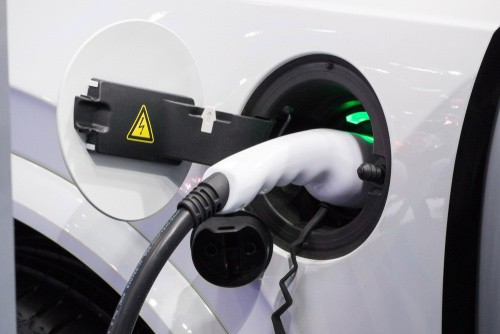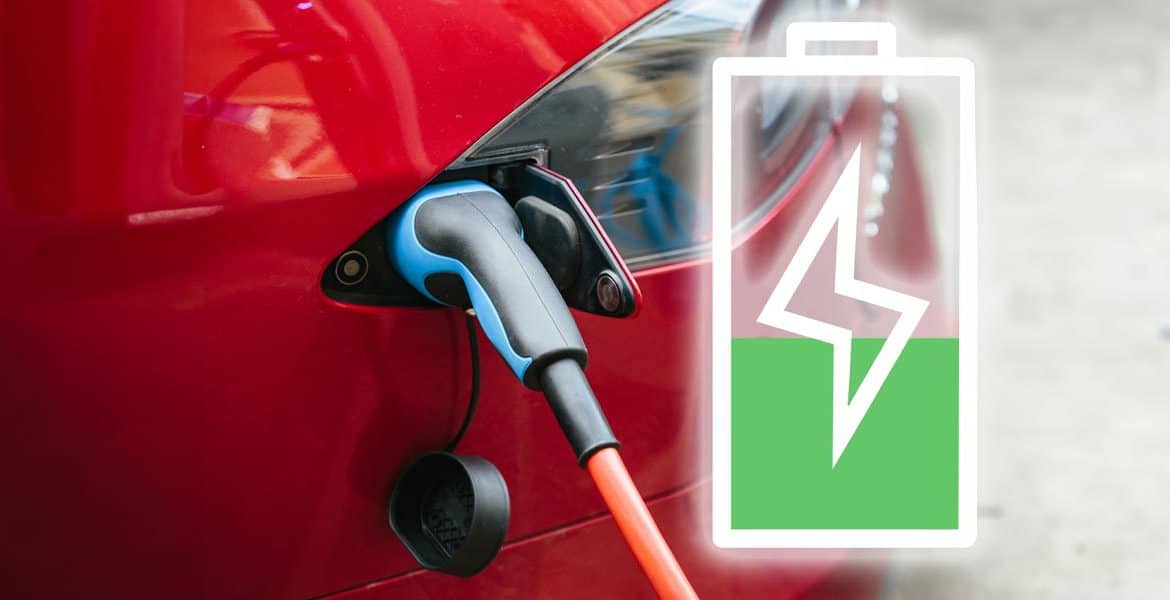To answer the question, we’ve done the analysis to see when it makes sense to choose an EV plan. Plus, we’ve enhanced WATTever’s comparison to calculate the benefit of super off-peak EV rates and allow you to calculate home charging costs for new EV owners. Spoiler alert – generally, EV plans work out really well!
EVs significantly increase your power needs
A typical EV that travels 15,000km a year requires around 3,000kWh of electricity. That can add 50-70% more energy to an average household’s power use. While a fast charger is essential for a long road trip, at 40-80 cents/kWh, you are paying a premium for a quick top-up.
The most convenient and cheapest place to power an EV is from your home. Ideally, charging from your own solar or someone else’s around the middle of the day or overnight when the car is away from home during the day.
What makes EV electricity plans different?
EV electricity plans offer EV owners access to super off-peak rates for home charging. For example, on some EV plans, this can be as low as 8 cents/kWh for overnight charging, while new “free power” plans provide a small window of free home EV charging. You can see the appeal of low-cost charging and why owners will want to charge at home as much as possible.
Typically, EV plans require proof that you own an electric vehicle to be eligible. But of course, you can run whatever appliances you like during the super off-peak windows as your meter (and retailers) doesn’t differentiate between EV charging and general electricity usage!
But what about the rest of the rates? Like solar plans, EV plans’ usage and supply rates tend to be higher, to recoup (what are often) loss-making super off-peak rates for the retailer. To make it worthwhile, you’ll want to charge enough at home so the savings from the super low-cost home charging outweigh the higher general rates. This tipping point happens quite quickly.
When it makes sense to move to an EV plan.
We’ve done the numbers to see when stepping up to an EV electricity plan makes sense.
Here’s a quick run down of the scenario we costed . Our household uses the benchmark amount of energy annually to heat, cool, light and power everything non-EV. To keep it simple, there’s no solar. (We’ll cover that in another article). The tariff type is a Time of Use. That’s because EV plans typically require smart or interval meters to measure the super off-peak charging periods.
The vehicle we chose was the Telsa Model Y (which is the highest selling EV in Australia in 2023) with an electricity consumption or 17kWh per 100km of driving.
We compare the annual costs of the EV plans against the cheapest generally available plan. And cost plans with charging in 5,000km increments (80% of this at home charging) – needing ~700kWh of electricity to travel that far! Our households will happily charge during the super off-peak periods (typically overnight) when the car is most likely home. And we limit the charging to a maximum of 6kWh for each hour in the super off-peak charging window which should be readily achievable for any home with a single phase 32A charging station.
For plans with limited super off-peak charging periods – some have just four hours per week – our model records any charging that can’t be completed in that window at the next lowest cost electricity e.g. off-peak or general usage rate depending on the tariff.
It doesn’t take long for EV plans to stack up.
At somewhere between 5,000 to 10,000 kilometres in all states – the best EV plans were exceptionally competitive against the cheapest available plan. And the more EV owners access low-cost home charging, the better value these plans represent. As the charts below show, these plans offer more affordable energy for EV homes than any standard offers.
EV plan costs in NSW – Ausgrid network
(Rates as at 21st November 2023)
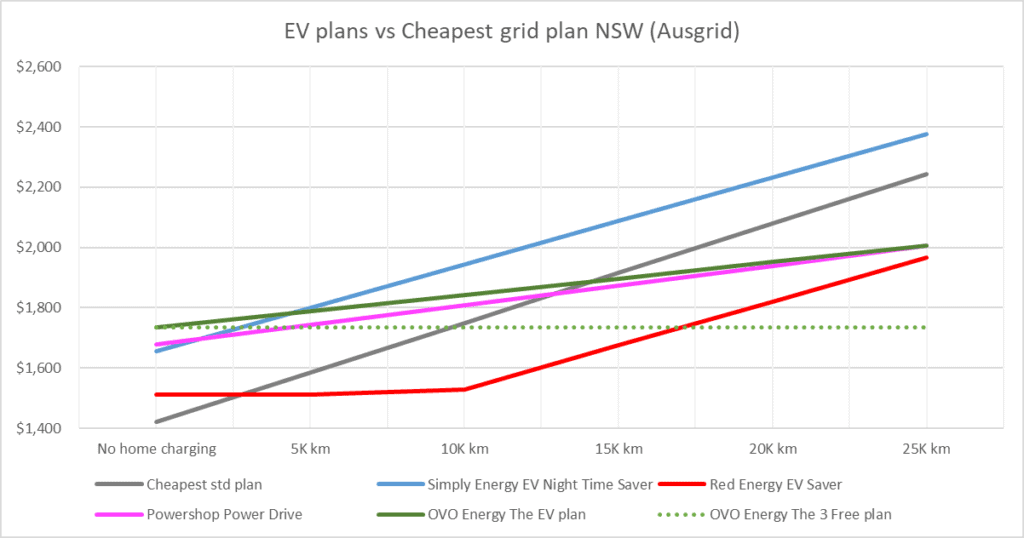
Annual cost as calculated by WATTever for a 3913kWh/year benchmark household on Time of Use tariff (EA025) in Ausgrid network (NSW) PLUS additional usage cost of charging EV as at 21.11.2023. All assumptions outlined in the article including 80% of EV charging from home. Plans and costs change so make sure to compare the latest offers on WATTever.com.au
EV plan costs in SE Queensland – Energex network
(Rates as at 21st November 2023)
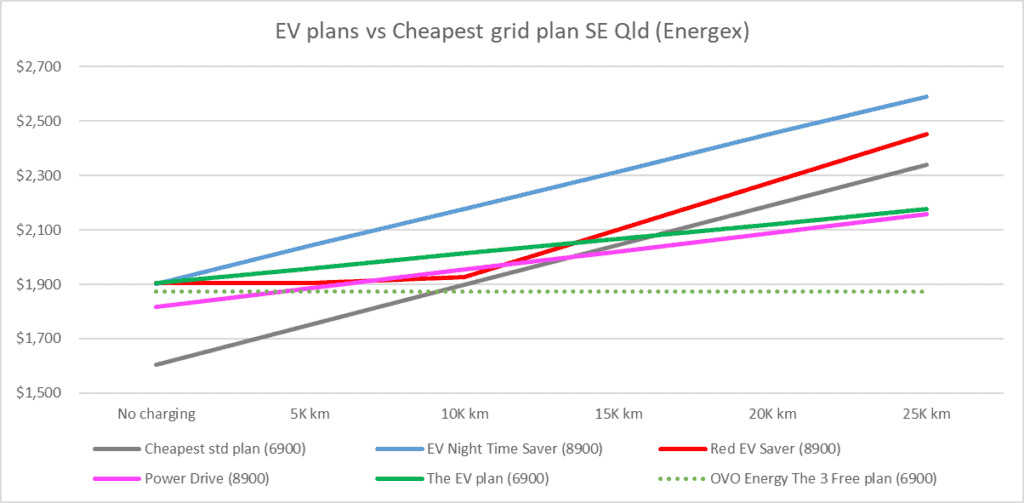
Annual cost as calculated by WATTever for a 4611kWh/year benchmark household on Time of Use tariff (8900) in Energex network (SE QLD) PLUS additional usage cost of charging EV as at 21.11.2023. All assumptions outlined in the article including 80% of EV charging from home. Plans and costs change so make sure to compare the latest offers on WATTever.com.au
EV plan costs in Victoria
(Rates as at 21st November 2023)
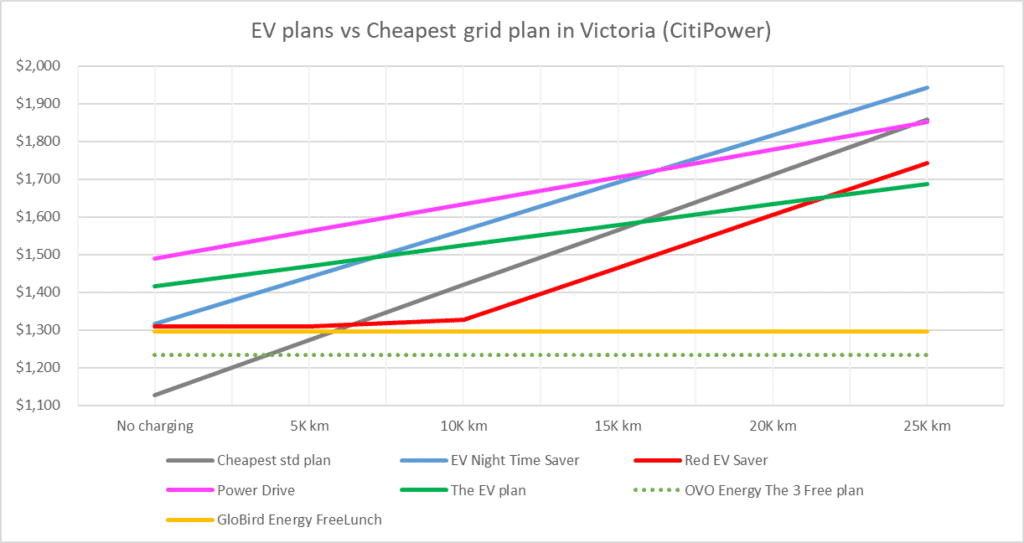
Annual cost as calculated by WATTever for a 4000kWh/year benchmark household on 7 day Time of Use tariff in CitiPower network (Victoria) PLUS additional usage cost of charging EV as at 21.11.2023. All assumptions outlined in the article including 80% of EV charging from home. Plans and costs change so make sure to compare the latest offers on WATTever.com.au
EV plan costs in South Australia
(Rates as at 21st November 2023)
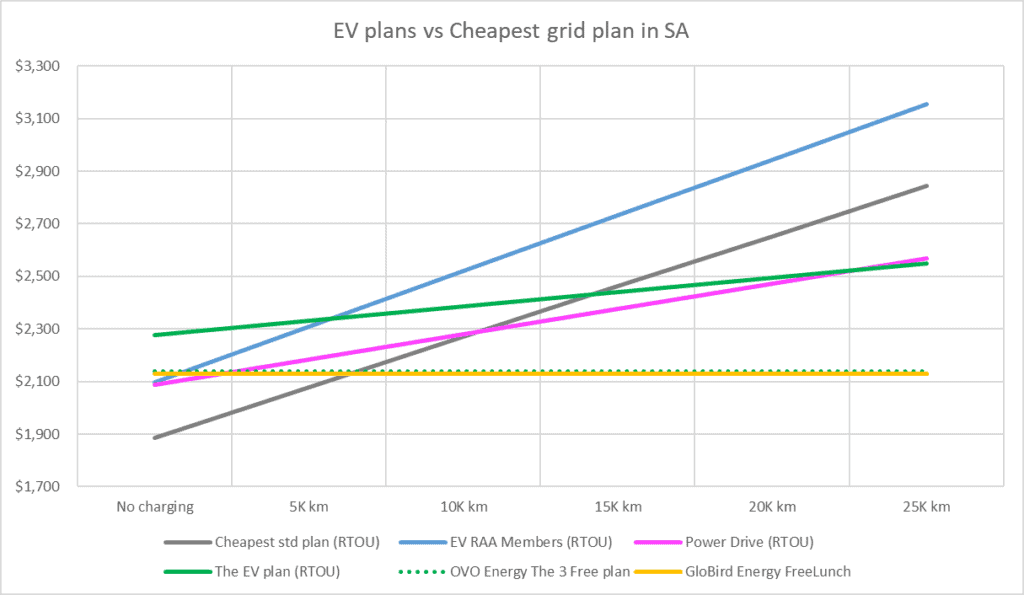
Annual cost as calculated by WATTever for a 4000kWh/year benchmark household on Time of Use tariff (RTOU) in South Australia PLUS additional usage cost of charging EV as at 21.11.2023. All assumptions outlined in the article including 80% of EV charging from home. Plans and costs change so make sure to compare the latest offers on WATTever.com.au
Getting the right EV plan for you.
It’s essential to check the super off-peak hours and consider whether this will work for your situation. Most EV plans provide super off-peak periods overnight, however we expect an increasing number of plans offering lower cost charging in the day due to the increasing prevalence of lower wholesale costs (thanks to solar) and network costs (solar sponge tariff). Of course, if your EV is not at home for enough of the super off-peak period, then you’ll have to top up at higher rates to meet your driving needs!
Also consider the level of home charging you think you’ll do. If you’re using a slow charging station (perhaps the portable EVSE that came with the car) then you may need to look for EV plans with longer super off-peak periods. Or, consider buying a faster charging station that allow you to take advantage of plans that offer “free” narrower charging periods. For most EV owners, given the convenience of home charging and the appeal of accessing low-cost energy, it’s well worth considering the shift to an EV or “free power” plan.
Overnight Saver EV Plans.
EV electricity plans have focussed on super-off-peak overnight charging windows – typically from midnight to 6 am. Most EVs are garaged overnight, so it’s certainly convenient. However, overnight energy comes from relatively more expensive fossil fuels. So, it’s unsurprising that the late-night super off-peak charge rates are offset by slightly higher plan rates across other periods. I suspect we’re in a honeymoon period for low-cost overnight charging rates – while retailers woo EV owners with generous offers.
Daytime charging from solar.
Many EV owners will want to charge their vehicles from rooftop solar as this is often the lowest-cost energy source. Certainly on weekends and during the week if a car is at home around the middle of the day this makes perfect sense. We’ll cover this scenario in our next article, as there’s more to consider when factoring solar into the charging equation.
Even if you don’t have solar, we’re now starting to see low-cost daytime charging with more retailers likely to bring Daytime EV Saver plans to market. This is driven by cheap daytime renewable energy in the grid and networks offering daytime off-peak. So, EV owners can anticipate being able to fill up with affordable renewable energy during the middle of the day.
What’s the right plan for me?
We’ve enhanced WATTever’s comprehensive electricity comparison to account for EV plans offering super-off peak charging.
Firstly, if you already have an EV plan with super off-peak EV charging, you can now input the kWh of EV charging into your energy profile. This enables you to see how other plans compare side-by-side.
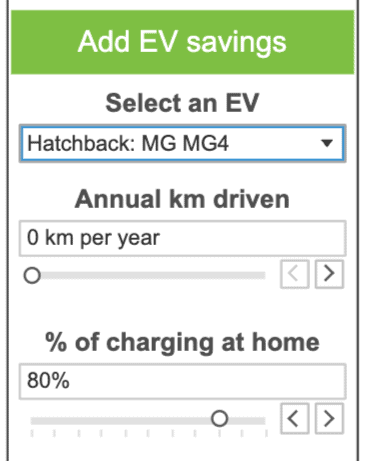
Secondly, existing or new EV owners, can now dial in how many kilometres they drive annually and how much they’ll charge from home. Then, the comparison will recalculate based on this power being provided through the super off-peak rates from the EV plans, and the lowest cost periods for other plans.
You can select one of four EV vehicle sizes (hatchback, crossover, sedan and SUV) to account for different power needs. The comparison assumes a maximum 6KWh home wall charger. The calculation factors that households will use the super off-peak charging windows first, then any more power needed is costed from the next cheapest usage window.
